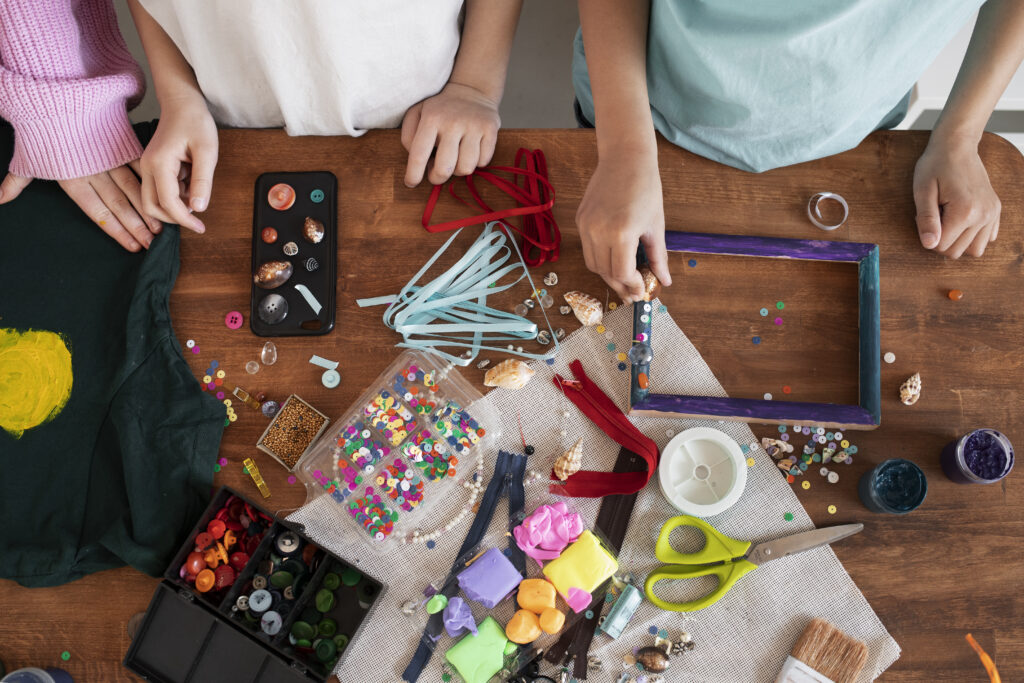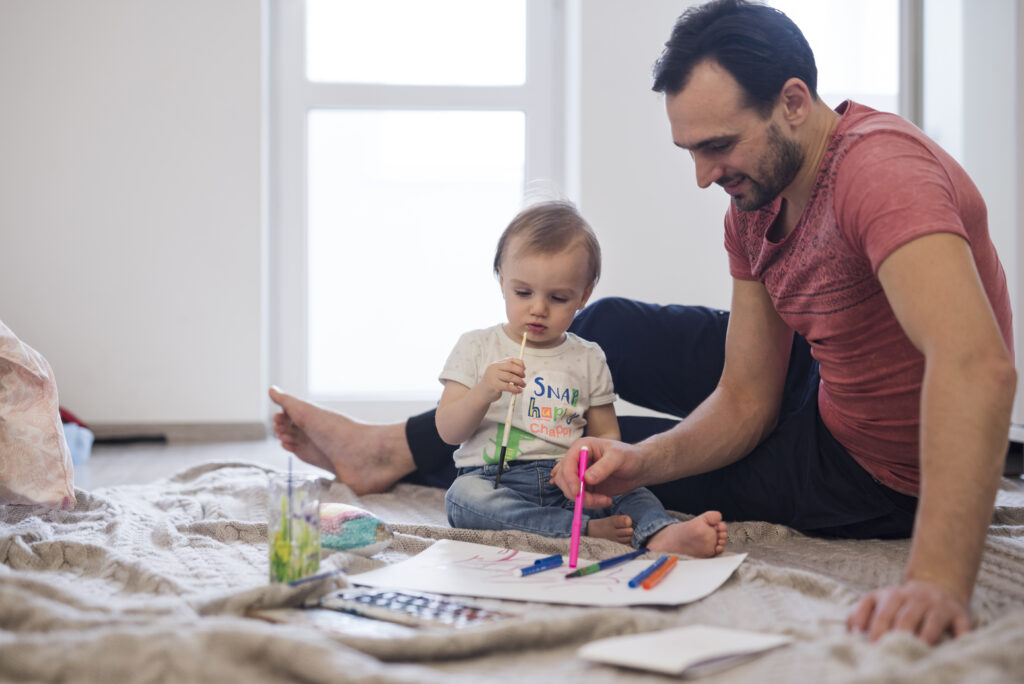Guiding the Way: Understanding Lighthouse Parenting

Parenting is often described as one of life’s greatest journeys, and like any journey, it’s easier with a guiding light. That’s where lighthouse parenting comes in. This balanced approach emphasizes guiding children through life with care and attention, like a lighthouse providing direction to ships in the storm. It’s about being a steady, supportive presence while allowing your children to navigate their own paths. Lighthouse parenting blends the principles of conscious parenting with practical strategies for fostering independence, emotional resilience, and a sense of security. Let’s dive deeper into this approach and explore how it can transform your parenting journey. What is Lighthouse Parenting? Lighthouse parenting is a term coined by Dr. Kenneth Ginsburg, a pediatrician and child development expert. It’s based on the idea that parents should act as beacons of light—guiding their children safely through challenges while letting them explore and grow. This approach strikes a balance between being involved and giving children the space they need to learn from their experiences. Lighthouse parents provide structure, set boundaries, and instill values while encouraging independence and critical thinking. Key Principles of Lighthouse Parenting How to Practice Lighthouse Parenting 1. Set Clear Boundaries Children thrive with structure, but they also need flexibility to explore. Establish rules that are firm yet reasonable, and explain the reasons behind them. For example, holding a family meeting to discuss house rules ensures that children feel involved and understand the expectations. 2. Encourage Independence Give your child opportunities to make decisions appropriate for their age. Whether it’s letting toddlers choose their outfits or allowing older kids to plan their schedules, these experiences build self-reliance and problem-solving skills. 3. Focus on Emotional Development Lighthouse parenting emphasizes emotional intelligence. Teach your child to identify and express their emotions in healthy ways. This approach aligns with practices taught in child development classes online and supported by child development specialists. 4. Balance Support and Freedom Be there when your child needs you, but resist the urge to solve every problem for them. Offering guidance while allowing them to face challenges on their own builds resilience and adaptability. The Benefits of Lighthouse Parenting Tips for Starting Your Lighthouse Parenting Journey Stay Informed and Empowered For more tips on parenting styles and strategies, check out our press releases here and follow us on Instagram and YouTube. We offer expert advice and real-life examples to empower your parenting journey. Final Thoughts: Lighting the Path for Your Child Lighthouse parenting is about finding the balance between providing guidance and allowing independence. By being a steady, supportive presence, you’re equipping your child with the tools they need to navigate life’s waters confidently. Embrace the journey, trust in your parenting instincts, and remember that your love and guidance are the most important beacons in your child’s life. Together, you’ll create a foundation of trust, resilience, and connection that will carry them through life’s challenges and triumphs.
Baby Signing: A Bridge to Early Communication and Connection

Baby signing is a powerful tool that can help toddlers express their needs before they’re able to speak. Imagine being able to understand what your child wants without tears or tantrums! Signing helps bridge the communication gap, making the early years smoother for both parents and children. Teaching simple signs can foster stronger connections, reduce frustration, and lay the groundwork for language development. Why Baby Signing Matters Babies are naturally eager to communicate, but their vocal cords and language skills aren’t fully developed in the first year or two of life. This often leads to frustration on both ends, as babies have needs and desires they can’t yet verbalize. Signing gives them a way to communicate before words fully emerge. Using signs in a child’s early life aligns with conscious parenting principles, encouraging us to be attentive to our child’s cues and respond to their needs in a supportive manner. When babies can communicate through signs, it enhances parent-child bonding and builds trust. Studies have shown that babies who learn basic signs tend to develop language skills more confidently, and early communication can lead to fewer tantrums and a calmer family environment. Getting Started with Baby Signing Starting with baby signs doesn’t have to be overwhelming. Simple, consistent gestures are often all it takes. Ideally, begin with a few basic signs that correspond to everyday needs or activities. Babies usually start signing back between 6-12 months, and using these signs regularly helps them understand and remember. Mindful parenting can help you integrate signing naturally. Engage your child by making eye contact, repeating the sign, and saying the word aloud. This approach reinforces the concept without overwhelming your baby. Top 5 Signs to Teach Your Baby Here are five basic signs to help your baby communicate their needs: Tips for Success with Baby Signing The Bigger Picture: Communication and Family Connection Baby signing not only empowers your child but also strengthens family communication. When your baby can express their needs, it reduces frustration for both of you and enhances family well-being. By creating a communication-rich environment, you’re building a strong foundation for language and connection that supports both short-term understanding and long-term emotional development. For more resources and tips on effective communication with your child, follow us on Instagram and YouTube. We share expert insights and practical advice that empower your parenting journey and provide tools for fostering a healthy family environment. Final Thoughts: Building Bonds Through Communication Teaching your baby to sign is a beautiful way to connect and communicate before words are fully formed. It’s an investment in your relationship, showing your child that you understand their needs and are committed to their growth. Every sign, every gesture, and every shared moment adds to a foundation of love and trust. So embrace this journey, have fun with the signs, and enjoy the milestones as your little one learns to express themselves. These moments are precious, and each sign brings you one step closer to a world of understanding and joy with your child.
Mental Health in Children: Recognizing Signs and Supporting Well-being

The mental health of children is an increasingly pressing issue. Paediatricians and mental health professionals are raising alarms as children face unprecedented challenges, including the lingering effects of the pandemic and growing societal pressures. As parents, it’s crucial to be vigilant in recognizing early signs of distress, as these can pave the way for early intervention and support. Let’s explore the initial signs of mental health struggles in children and how we, as parents, can guide them through these challenges with compassion and mindful parenting. Recognizing the Signs of Distress Children often express mental distress differently than adults, so it’s essential to understand their behaviors and emotions from a developmental perspective. Here are some initial signs that may indicate your child is struggling: What to Do When You Notice Signs of Distress If you observe any of these behaviors, it’s essential to approach the situation with patience and empathy. Conscious parenting encourages us to be fully present with our children, acknowledging their emotions without judgment. Finding Supportive Resources It’s also helpful to seek out resources that align with your child’s needs. From child development classes online to community-based programs, there are numerous avenues for gaining insight into your child’s mental health journey. Access to best parenting resources can empower you as a parent to support your child effectively and understand their unique needs. Fostering Mental Health through Community No parent should have to navigate these challenges alone. Following parenting-focused communities on social media, such as our Instagram and YouTube channels, can provide valuable tips, expert interviews, and support from other parents who may be facing similar situations. Sharing stories, resources, and insights can create a sense of community that strengthens our parenting journey. Final Thoughts: Your Role in Supporting Your Child’s Mental Health Supporting your child’s mental health is an ongoing journey that requires compassion, patience, and a commitment to understanding. Remember, noticing signs of distress is not a reflection of failure but an opportunity to strengthen your bond and guide them through life’s challenges.If you’re ever unsure, remember that reaching out for help is a powerful step toward supporting your child. Together, through mindful parenting and open communication, we can create a safe, nurturing environment where children feel seen, heard, and loved. Let’s walk this path with courage, knowing that each moment of connection helps build resilience and a brighter, healthier future for our children.
Crafts with Kids: Fun, Connection, and Learning Without the Mess

Crafting with kids is more than just a fun activity—it’s a wonderful way to foster creativity, boost development, and spend meaningful time together. Craft activities encourage children to explore their imagination, develop fine motor skills, and learn patience. As a parent, you may worry about the potential mess or how much effort it takes to get everything organized, but there are plenty of low-key crafts that keep your home intact and still engage your child. Why Crafts Are Beneficial for Kids Crafting offers a range of developmental benefits for children. Engaging in crafts can improve fine motor skills, as children cut, glue, or color. It encourages problem-solving as they figure out how to construct something or think creatively. Crafts also provide an opportunity for parent-child bonding; by working together, you’re sharing experiences, communicating, and building memories that last. Moreover, crafts foster a sense of achievement. When kids complete a project, they feel proud of their work, boosting their self-esteem and encouraging them to try new things. This is where mindful parenting comes in; being present and actively participating in your child’s crafting experience allows you to see the world through their eyes and reinforces the connection between you. Low-Key Craft Ideas to Minimize the Mess Here are a few easy, low-key craft ideas that engage children without causing chaos in your home: Tips for Mess-Free Crafting To make sure crafting remains a stress-free experience, here are a few tips: Bonding and Learning Through Crafts Crafting together can also serve as a great tool for conversation. Holding a family meeting to discuss upcoming craft ideas or letting your child choose the materials for a project can foster independence and make them feel valued. These activities also help children understand collaboration and patience. Crafting time is a perfect example of conscious co-parenting too, where both parents can get involved, share responsibilities, and enjoy the creative journey with their children. Plus, when kids see their parents involved, they’re often more excited to participate and learn. How Crafts Benefit Parents Too Crafting isn’t just beneficial for kids; it’s rewarding for parents as well. Watching your child’s creativity unfold can bring immense joy, reminding you of the importance of slowing down and enjoying simple pleasures. As a parent, crafting offers you a chance to be fully present with your child, which is at the heart of conscious parenting. Crafting can also give you insights into your child’s thought process, helping you understand their preferences and strengths. This perspective can be valuable as you explore child development resources or consider child development classes online to support your child’s learning journey. Final Thoughts: Make Crafting a Regular Bonding Activity Crafting with your child is a meaningful way to encourage creativity, support development, and strengthen your connection. It doesn’t have to be elaborate or messy to be effective. With simple, low-key projects, you can enjoy all the benefits of crafting without the stress. For more tips on activities that enhance family bonding and support your child’s growth, don’t forget to follow us on Instagram and YouTube. We share insights, tutorials, and ideas that make parenting and family life fulfilling and fun. Remember, the moments spent creating and connecting with your child are precious. Embrace them, enjoy them, and watch as your bond grows stronger with each masterpiece created together.
Raising Boys: Nurturing Connection and Understanding

Raising boys can be a wonderfully unique journey. Boys often engage with the world in ways that are more physical than emotional, and understanding this dynamic can help parents foster meaningful connections that support their development. While every child is unique, research shows that boys tend to explore and learn differently from girls. By recognizing these traits and adopting a mindful approach, parents can support their boys in a way that helps them thrive. How Boys Learn and Play Boys are typically more physically active, exploring the world through touch, movement, and play. They’re often drawn to activities that challenge their strength, coordination, and problem-solving abilities. This physical engagement is not just an outlet for their energy; it’s also essential for their brain development. Studies show that physical play can enhance boys’ cognitive skills, emotional regulation, and social interactions. For instance, activities for toddlers that involve building, climbing, or solving puzzles can provide boys with the physical stimulation they need while also encouraging cognitive growth. Simple games like building blocks or playing catch can improve motor skills and teach problem-solving in a hands-on way. Embracing these tendencies can make learning enjoyable and productive, especially for young boys. Emphasizing Physical Connection and Play While boys may express themselves through physicality, this doesn’t mean they’re any less capable of emotional depth. They simply may require different ways to express their emotions. Often, boys connect deeply during active play or shared physical activities. If you’re aiming for parent-child bonding, consider incorporating activities that allow boys to express themselves while engaging physically, like playing sports, hiking, or even roughhousing (within safe boundaries). Active play creates a space for boys to communicate nonverbally, making it easier for them to open up emotionally over time. For example, taking a walk together or working on a project side-by-side allows for shared moments that build trust. Parents can use these moments to gently ask questions or check in, creating opportunities for connection without forcing direct conversation. Supporting Connection of Emotional Growth in Boys While physicality is essential for many boys, fostering emotional growth is equally important. Boys may not always express emotions as openly as girls, so helping them identify and understand their feelings is crucial. Mindful parenting can be a valuable approach here, as it encourages parents to observe their child’s emotional cues and respond with patience and empathy. Encourage boys to recognize and name their emotions. During a family meeting, for example, create a safe space for everyone to share their feelings, even if it’s just a few words. Boys often benefit from seeing emotions discussed openly and positively, which teaches them that it’s okay to feel and express their emotions. Using conscious parenting strategies like active listening and affirming their feelings can help boys understand that emotions are natural and important. This is especially impactful when practiced consistently, as it models a balanced approach to both physical and emotional engagement. Practical Tips for Raising Boys Nurturing Growth Through Connection Raising boys is about more than just managing their energy levels. It’s about recognizing their unique ways of connecting, learning, and growing. By fostering both physical engagement and emotional openness, parents can create an environment where boys feel secure, understood, and valued. If you’re interested in learning more about parenting strategies that support healthy, well-rounded development, follow us on Instagram and YouTube. We share tips, insights, and resources to help you navigate your parenting journey, building deeper bonds and a supportive family dynamic. Remember, every child is unique, and the journey of raising boys is filled with moments of discovery and growth. Celebrate these milestones, and know that each day brings new ways to connect, understand, and nurture the young men they’re becoming.
Raising Girls: Nurturing Emotional Connection and Growth

Raising girls comes with its own unique joys and challenges. Often, girls are wired for emotional connection before physical connection, making relationships, communication, and empathy key elements in their development. Understanding this can help parents create an environment that nurtures these strengths, while also fostering independence and resilience. By meeting their daughters’ emotional needs, parents can build a foundation of trust, love, and respect that lasts a lifetime. The Power of Emotional Connection From a young age, girls tend to be drawn toward emotional and social engagement. They’re often curious about relationships, keen observers of emotions, and naturally inclined toward empathy. This tendency doesn’t mean they won’t enjoy physical activities, but it does highlight the importance of parent-child bonding in their development. When parents prioritize connection, girls feel understood, valued, and secure, which supports their confidence and self-esteem. This emotional connection begins in simple ways, such as spending quality time together, engaging in deep conversations, and actively listening to their feelings. Mindful parenting can be particularly effective here, as it encourages parents to tune in to their child’s emotional world and respond thoughtfully, rather than reactively. Girls often benefit when parents model open communication and emotional awareness, teaching them that their feelings are valid and worth exploring. How Girls Learn and Engage Girls are typically more interested in activities that involve communication, storytelling, and creative play. For instance, activities for toddlers like role-playing, drawing, and reading aloud can be incredibly engaging for young girls, as they combine creativity with social interaction. Storytelling, in particular, helps girls develop language skills, empathy, and a better understanding of emotions. As girls grow, they often seek opportunities to connect and engage with others, whether through friendships, teamwork, or collaborative learning. Parents can support these tendencies by creating opportunities for social interaction and encouraging activities that emphasize teamwork and cooperation. This doesn’t mean girls won’t thrive in independent activities, but social and emotional engagement is often a key motivator in their learning process. Building Emotional Intelligence To support your daughter’s emotional growth, it’s essential to nurture her emotional intelligence. This means helping her recognize and manage her emotions, as well as understand the emotions of others. Activities that encourage self-reflection, such as journaling or drawing, can be great tools for girls to explore their feelings. Holding regular family meetings can also be a way to encourage emotional openness. These gatherings create a safe space for everyone to share their thoughts, address conflicts, and practice respectful listening. When girls see their parents valuing emotional expression, they learn that it’s okay to express vulnerability and ask for support. Practical Tips for Raising Girls Encouraging a Growth Mindset Girls may sometimes feel pressured to be perfect, which can lead to anxiety or self-doubt. To counter this, encourage a growth mindset by celebrating effort and resilience rather than perfection. Remind her that mistakes are part of learning and that growth comes from trying new things, even if she doesn’t succeed right away. This helps her develop a healthy self-image and the courage to take risks. Final Thoughts: A Journey of Connection and Empowerment Raising girls is a rewarding experience, filled with moments of deep connection and joy. By prioritizing emotional connection, supporting her independence, and nurturing her growth mindset, you’re helping her build a strong foundation for the future. Girls who feel valued, understood, and respected grow into women who are confident, empathetic, and resilient. If you’d like more tips on raising confident and emotionally intelligent daughters, follow us on Instagram and YouTube. We share insights, resources, and practical advice to support your parenting journey and foster healthy family dynamics. Remember, every moment spent connecting with your daughter is an investment in her future. By showing her love, understanding, and support, you’re not only raising a daughter—you’re nurturing a strong, compassionate individual who will carry these lessons forward for a lifetime.
Self-Care for Parents: Prioritizing Your Well-being to Thrive in Parenting

Parenting is an all-encompassing role, one that often leaves parents with little time for themselves. Yet, as the familiar saying goes, we need to “put on our own oxygen mask first” to be the best caregivers we can be. Practising self-care isn’t selfish—it’s essential for both you and your family. Maintaining boundaries and finding ways to nurture yourself is a gift to your children, allowing you to show up as a calm, resilient, and attentive parent. Why Self-Care Matters in Parenting When parents are well-rested, emotionally balanced, and fulfilled, they can better handle the demands of parenting. Self-care supports family well-being by helping parents manage stress, model healthy behaviors, and foster a nurturing home environment. Children are observant; when they see their parents taking care of their own needs, they learn the importance of respecting boundaries and prioritizing mental health. Incorporating mindful parenting into your daily life can serve as a form of self-care. Mindfulness allows you to remain present, reducing feelings of overwhelm and making it easier to connect with your child on a deeper level. Setting Healthy Boundaries in Parenting Boundaries are a form of self-care, helping you define where your personal needs end and where your parenting responsibilities begin. These boundaries aren’t about creating distance but about protecting your energy and emotional well-being. Healthy Ways to Put Your Oxygen Mask On First Modeling Self-Care for Your Children When children witness their parents caring for themselves, they learn that self-care is valuable and necessary. Conscious parenting encourages parents to set examples that children can carry forward into their own lives. By demonstrating that self-care is a priority, you’re showing your child that boundaries, self-respect, and personal time are essential aspects of a balanced life. Finding Resources and Community If you’re looking for ways to incorporate more self-care into your routine, explore resources like child development classes online or follow our Instagram and YouTube channels. We share practical tips, supportive insights, and real-life stories to empower your parenting journey and offer tools for self-care along the way. Final Thoughts: Self-Care is Essential for Thriving in Parenthood Remember, self-care isn’t about indulging in luxury but about meeting your basic needs with kindness and respect. Taking time for yourself doesn’t mean taking away from your child—it means investing in the resilience and strength that both you and your family benefit from. Embrace self-care as a crucial element of parenthood, and watch as it positively transforms your relationship with your children, your partner, and, most importantly, yourself. Your well-being is a gift to your family, so treat it with the care and attention it deserves. Start today by setting one small boundary, dedicating a few minutes to yourself, and committing to the journey of nurturing your own well-being alongside your role as a parent.
Vaccination: Making an Informed Decision for Your Child’s Health

Vaccinating our children is one of the most important choices we make as parents, impacting not only their health but also the well-being of our communities. However, deciding on vaccination schedules can feel overwhelming, especially with the abundance of information and differing opinions. Here, we’ll explore how to make an informed choice about vaccinations, focusing on their safety, efficacy, and the benefits for children. Why Vaccines Are Important Vaccines protect children from serious illnesses that once had devastating effects. Diseases like measles, mumps, and whooping cough were once common and often fatal, but thanks to widespread vaccination, they are now rare. Vaccinations work by teaching the immune system to recognize and combat specific germs, creating immunity without causing the illness itself. For parents practicing conscious parenting, vaccinations align with the goal of nurturing a child’s health in the most effective way possible. Vaccinating is an act of love and responsibility, ensuring that our children are protected while also safeguarding the health of others. Understanding Vaccine Safety and Efficacy One of the primary concerns for parents is the safety of vaccines. Vaccines undergo rigorous testing and must pass strict safety standards before being approved for use. Numerous studies have shown that vaccines are both safe and effective in preventing disease. While some children may experience mild side effects, like redness at the injection site or a slight fever, serious reactions are extremely rare. The benefits of vaccination far outweigh the risks. Vaccines are about prevention, reducing the chance of severe complications from diseases that can impact family well-being and lead to long-term health issues. Making Informed Decisions About Shot Schedules Vaccination schedules can vary depending on where you live, but they are typically designed to provide immunity at the ages when children are most vulnerable. Your child’s pediatrician is an excellent resource for understanding the recommended schedule and any adjustments based on individual health factors. If you’re feeling unsure, consider holding a family meeting to discuss the vaccination plan. Involving family members in the discussion helps ensure everyone understands the reasons behind each vaccine, building a supportive environment around your decision. Talking to Your Child About Vaccination Preparing children for vaccinations can make the experience less stressful for everyone. Using mindful parenting techniques, parents can help their children feel more comfortable and secure during vaccinations. Explain what to expect in simple terms: “The doctor will give you a little shot to help keep you healthy. It might pinch, but it’ll be over very quickly.” For younger children, you might engage them in activities for toddlers that encourage a positive mindset before visiting the doctor. Simple games like “doctor role play” can be fun and help them understand that doctors are there to help. Supporting a Healthy Vaccination Experience Here are a few practical tips to make vaccination day easier for both you and your child: Building Trust and Open Communication Parents can also seek the advice of a child development specialist if they have concerns about vaccine impacts on their child’s growth or well-being. Specialists can offer personalized guidance, addressing any unique health needs your child may have. If you’re co-parenting, discussing your vaccination plan openly and respectfully can ensure a united approach that supports your child’s health. Conscious co-parenting practices encourage open communication, where both parents have a voice in health decisions, fostering a sense of partnership and shared responsibility. Finding Supportive Resources Navigating vaccination decisions can be easier with reliable resources. Our website provides access to the best parenting resources, designed to support you in making informed choices. And don’t forget to follow us on Instagram and YouTube for tips, insights, and expert interviews that can empower your parenting journey with up-to-date information on topics like vaccination and child development. Final Thoughts: A Decision Rooted in Love and Care Vaccination is a personal yet impactful decision rooted in love and care for your child’s well-being. By prioritizing informed choices, you’re not only protecting your child from serious illness but also contributing to a healthier community. Taking proactive steps in your child’s health journey, like following recommended vaccination schedules, is a meaningful way to nurture their growth and resilience. Remember, each vaccination is a step toward a stronger, healthier future for your child. Embrace this journey with confidence, knowing that your thoughtful choices are setting them up for a life of well-being, safety, and happiness.
Boosting Literacy Levels: Encouraging Young Readers at Home

One of the greatest gifts you can give your child is a love for reading. Reading not only expands vocabulary and comprehension skills but also fosters creativity, critical thinking, and empathy. As parents, you play a key role in helping your child develop strong literacy skills. But how exactly is literacy learned, and what can you do to encourage more reading at home? Let’s explore the journey of literacy and practical tips to support your young reader. How Literacy Is Learned Literacy is a process that begins long before children can read or write on their own. Babies and toddlers, for example, absorb language through listening and interacting with their parents and environment. This early exposure to words and sounds builds the foundation for future reading and writing. As children grow, they start to recognize letters, sounds, and words, a phase known as phonological awareness. They begin to associate letters with their corresponding sounds, which is crucial for decoding words when they eventually learn to read. This is why activities for toddlers, like reading picture books, singing nursery rhymes, and playing word games, are so important. These activities lay the groundwork for literacy by making language fun and engaging. By the time children reach school age, they begin to grasp more complex aspects of language, such as sentence structure, punctuation, and comprehension. However, it’s important to remember that literacy isn’t just about reading words—parent-child bonding around reading also nurtures emotional intelligence, empathy, and cognitive development. Encouraging Literacy at Home: Tips for Parents One of the most effective ways to foster a love for reading is to read aloud to your child every day. Even after your child can read independently, reading together is a powerful bonding experience that helps them develop listening skills and enriches their vocabulary. Choose a variety of books, from fiction to non-fiction, and take the time to discuss the story afterward. This keeps them engaged and helps improve their comprehension. Designate a special spot in your home as the reading corner. It could be a cozy nook with pillows, blankets, and plenty of books. Making reading a special, enjoyable activity encourages children to pick up a book even without prompting. You can rotate the books regularly to keep their interest piqued and introduce new genres or authors. Children learn by example, so if they see you reading, they’ll be more likely to do the same. Whether it’s a novel, magazine, or even a cookbook, let them see you enjoying reading as a part of daily life. Mindful parenting encourages active involvement in your child’s learning journey, and modeling a love for books is a simple but effective way to nurture this. While limiting excessive screen time is important, technology can also be a valuable tool in promoting literacy. Educational apps and interactive eBooks can offer new ways for your child to engage with stories. The key is balance—conscious parenting involves guiding your child to use technology in meaningful ways while also fostering a love for physical books. Create an accessible home library filled with books that match your child’s interests and reading level. Having a range of books at their fingertips encourages them to explore different topics and genres. You can also include audiobooks, which can be especially helpful for children who may struggle with traditional reading. Literacy development doesn’t always have to involve sitting down with a book. Try incorporating reading into everyday activities—read recipes together while cooking, go through the mail and point out words, or ask your child to read the grocery list. These small, everyday reading moments can help reinforce literacy skills in a practical way. Final Thoughts: Make Reading a Joyful Experience Creating a literacy-rich home environment is one of the best ways to support your child’s development and foster a lifelong love for reading. Remember that every child learns at their own pace, so be patient and make reading a joyful, pressure-free experience. For more tips on encouraging reading at home and fostering healthy parent-child relationships, follow us on Instagram and YouTube. We share valuable insights, practical advice, and resources to help empower your parenting journey and support your child’s literacy development. Reading isn’t just about learning words—it’s about unlocking a world of imagination and possibilities. Let’s nurture that world together!
Fatherhood Matters: The Crucial Role of Dads in Child Development

Fatherhood is not just about fulfilling a traditional role—it’s about shaping a child’s emotional and cognitive development in ways that are both profound and lasting. Studies have shown that the presence of a male role model, whether it’s a father or another nurturing male figure, has a positive impact on a child’s brain development. But what happens when a dad isn’t in the picture, and how can we create a fatherhood experience in different family dynamics, such as female-led relationships? The Impact of Fatherhood on Brain Development The involvement of a father or father figure in a child’s life offers unique contributions to their growth. Fathers often encourage more risk-taking and independence, fostering problem-solving skills and resilience. These experiences stimulate brain regions responsible for social behavior, cognitive flexibility, and emotional regulation. For instance, a father’s rough-and-tumble play helps children develop spatial awareness and emotional control, which are critical for brain development. Moreover, research indicates that children with an active male presence tend to perform better academically and have fewer behavioral problems. Their brains are wired to benefit from both maternal nurturing and the complementary parenting style that fathers often bring to the table, such as a balance of challenge and support. The Absence of a Father Figure When dads aren’t part of the equation, whether due to separation, loss, or other circumstances, children can still thrive with intentional parenting. However, the absence of a father figure can leave gaps in certain developmental areas. Research suggests that children growing up without male role models may face challenges with emotional regulation and social behavior. This doesn’t mean that children raised in single-mother households are at a disadvantage—it simply highlights the importance of ensuring a variety of nurturing relationships in a child’s life. In the absence of a father, extended family members, family friends, or mentors can step in to offer guidance, stability, and the encouragement that children need. Positive role models, both male and female, are crucial in creating a nurturing environment that supports a child’s holistic growth and family well-being. Fatherhood in Female-Led Relationships In female-led families, creating a fatherhood experience is about balancing different aspects of parenting to ensure children receive the benefits that both genders traditionally offer. This may involve including trusted male figures in the child’s life, such as uncles, grandfathers, or close family friends who can play a supportive, nurturing role. But just as important is recognizing that gender is not the only factor in successful parenting. Conscious parenting—where both parents work together to provide love, structure, and emotional intelligence—can replicate the dynamics traditionally associated with a father. Children can thrive in female-led households, particularly when their environment fosters open communication, emotional support, and diverse role models. Practical Tips for Enhancing Fatherhood Involvement Whether you’re a dad looking to deepen your relationship with your child or a mom in a single or same-gender household trying to ensure your child experiences the benefits of male role models, here are a few tips: Final Thoughts Fatherhood matters because it shapes the way children navigate the world—physically, emotionally, and cognitively. Whether a child is raised in a traditional household, by a single mom, or in a female-led family, the presence of nurturing and diverse role models plays an irreplaceable role in their development.If you’re looking for more insights on parenting, including tips on fostering healthy family dynamics and empowering your parenting journey, don’t forget to follow us on Instagram and YouTube. We offer valuable resources that will support you as you guide your child’s growth in today’s complex world.

